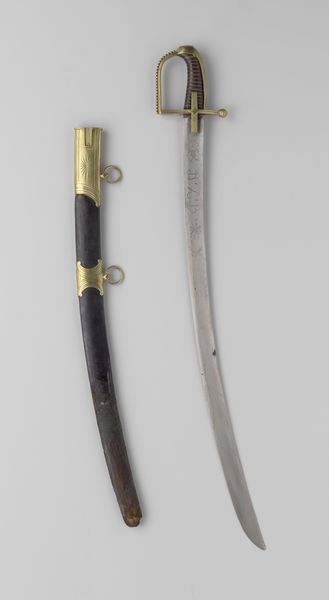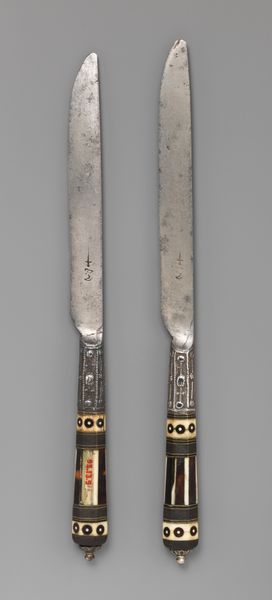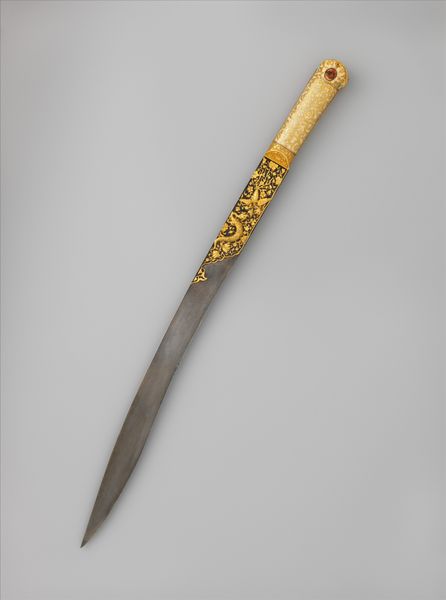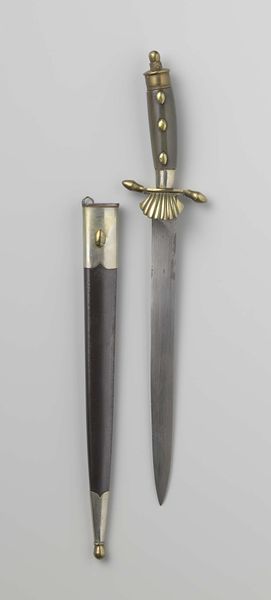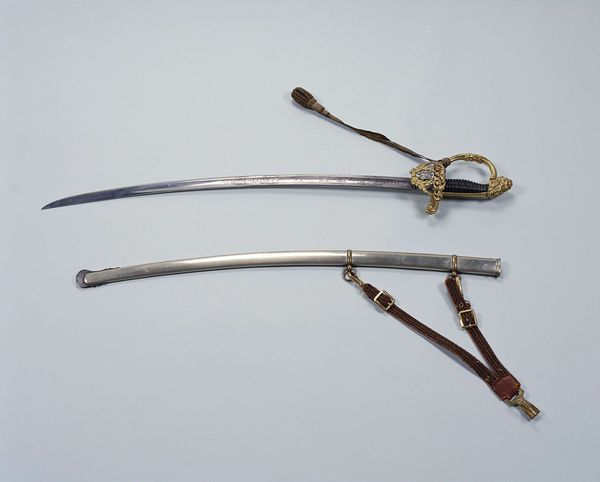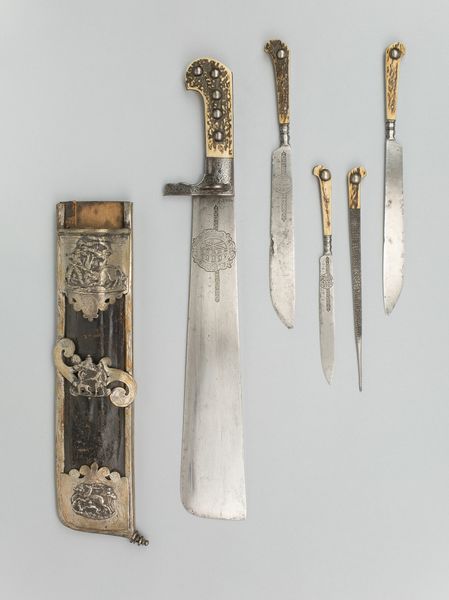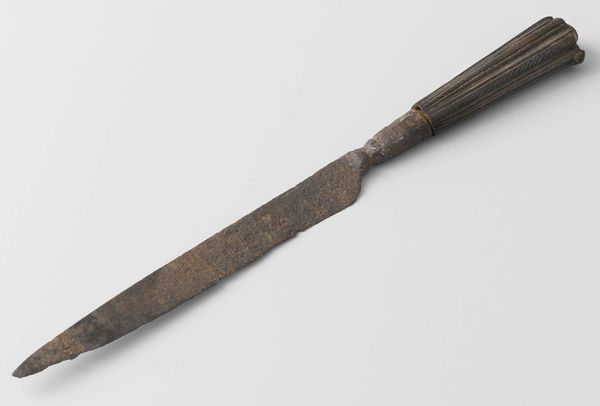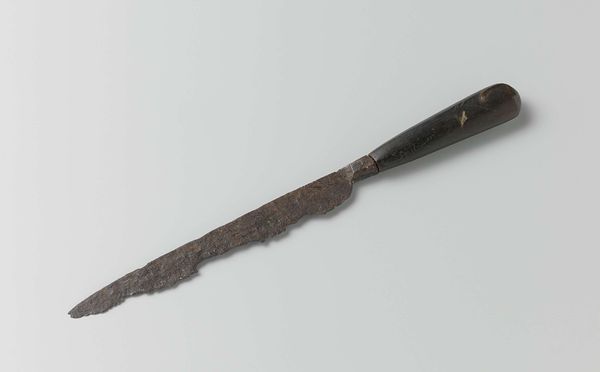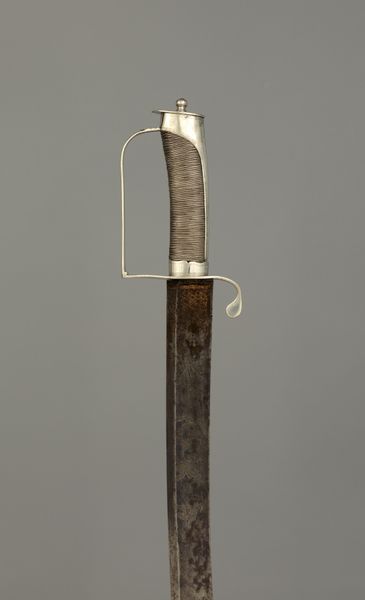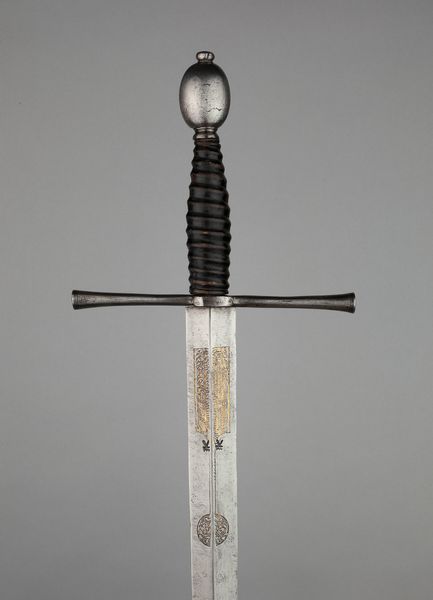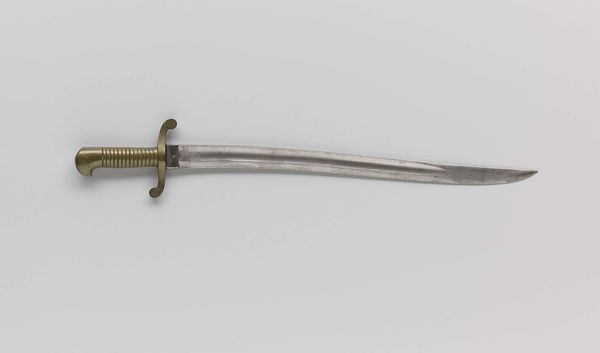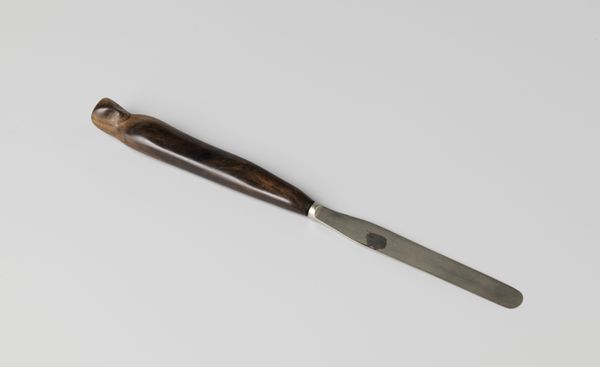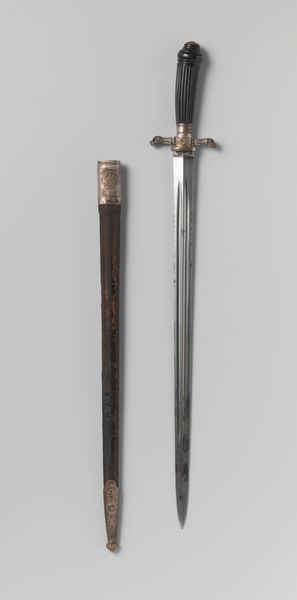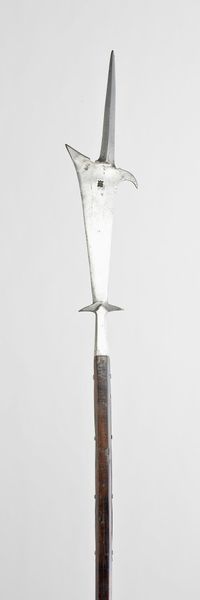
Een menuki in de vorm van twee poppen en een in de vorm van een mandje; rechthoekige tsuba met relief-versiering; kozuka 1600 - 1900
0:00
0:00
drawing, print, metal, wood
#
drawing
#
still-life-photography
# print
#
metal
#
asian-art
#
wood
Copyright: Rijks Museum: Open Domain
Curator: It strikes me how elegantly sinister this ensemble of sword fittings appears. Editor: Let’s contextualize that a bit. This is a collection of Japanese sword fittings, dated roughly between 1600 and 1900. We see a menuki, which are decorative metal ornaments for a sword hilt, plus a rectangular tsuba—the handguard—and a kozuka, a small utility knife often carried with a katana. Curator: The individual components, even extracted from the whole weapon, speak volumes. The handle's diamond-shaped texture makes me wonder about the artisan’s touch, and how it impacts the wielder. Editor: Yes, precisely! The materiality speaks directly to the labor involved. We are seeing here intricate metalwork—the forging, carving, and assembly of each element was likely highly specialized labor within a feudal structure. Beyond mere utility, the craftsmanship elevates them, complicating rigid distinctions between art and functional object. Who had access to these specialized crafts? Who commissioned these pieces? What sort of patron-client power dynamic emerges from that context? Curator: You're absolutely right. And it isn't solely for show. I want to focus more on this tsuba— the guard. The relief ornamentation, its intricate design – is functional art, made with specific intent. What is the metal composed of? How did the choice of material shape its reception and value? Editor: Well, the motifs could point us to the identity of the commissioner, even clues to their status within that intricate social fabric. Consider this kozuka, reportedly crafted by Yoshimitsu— how does that attribution influence its value, considering the role of named artisans? Can we read identity, class, or perhaps even the aspirations of its owner from these materials and motifs? Curator: Very well said. Examining these fittings, considering the materials used and how they were worked upon allows a grasp of past manufacturing processes. Also, its purpose! The social conditions related to its utilization in past societies. Editor: For me, understanding how each component resonates beyond its material reality lets me understand broader sociopolitical narratives surrounding the samurai culture. Curator: So true; I concur in closing, focusing too much on functional utilization makes me lose all those narratives that emerge. Editor: Right back at you; I shall be mindful of not straying so far off as to miss recognizing their craftsmanship.
Comments
No comments
Be the first to comment and join the conversation on the ultimate creative platform.
